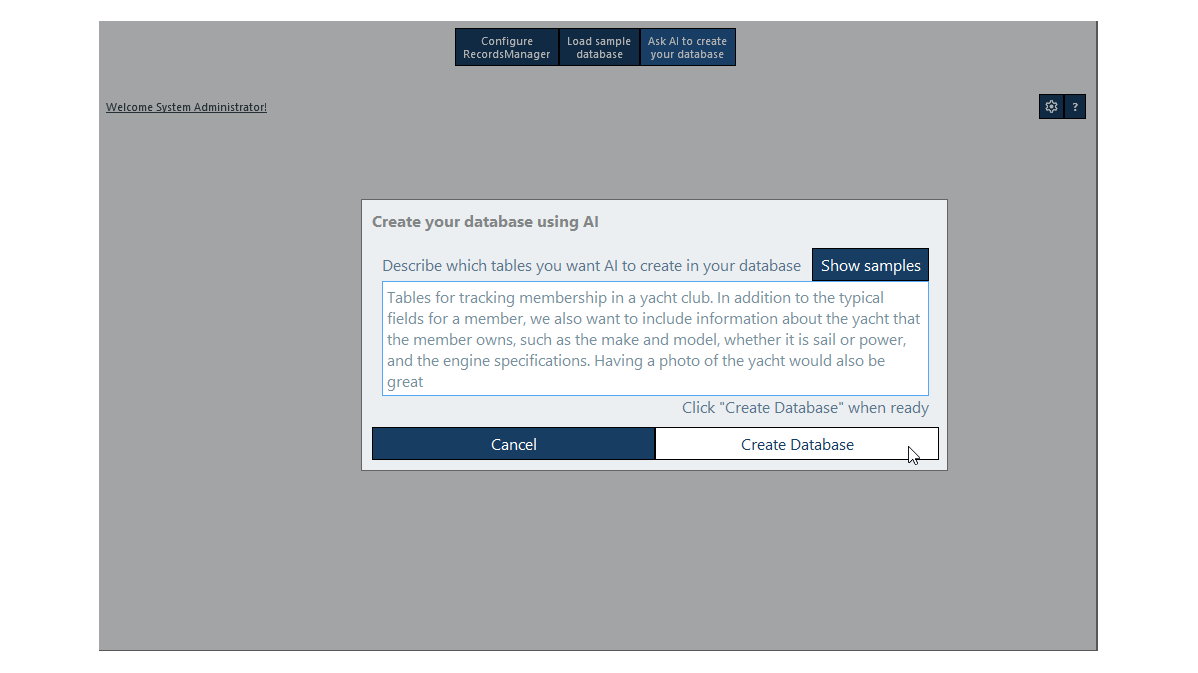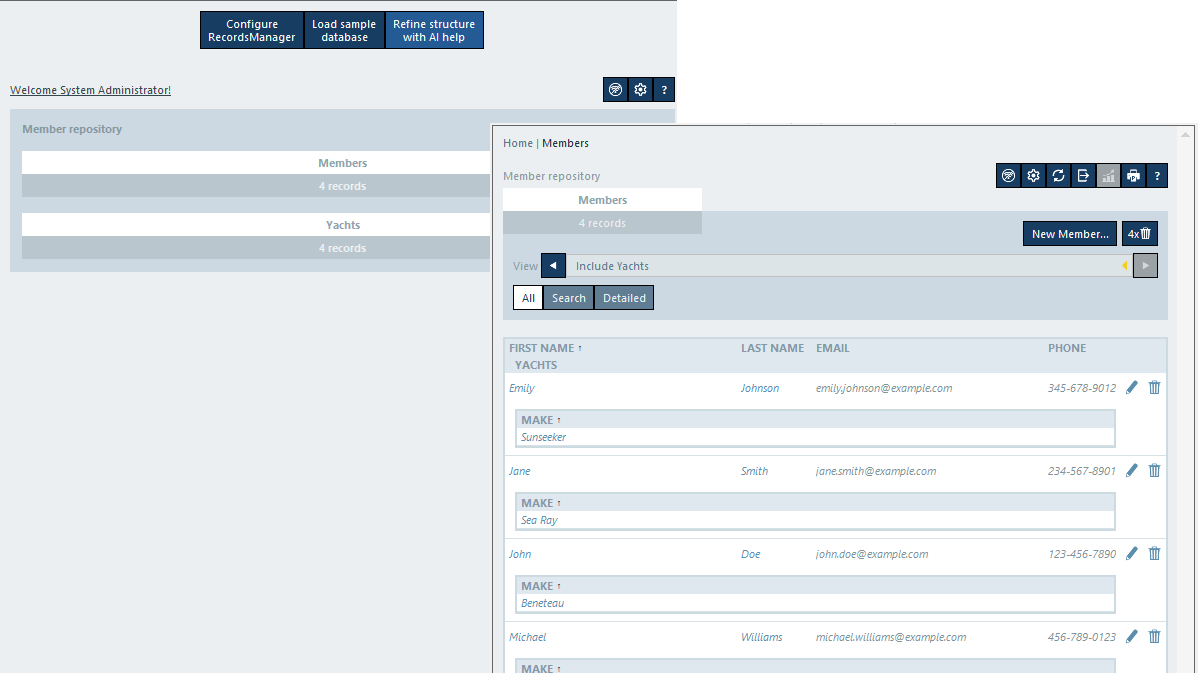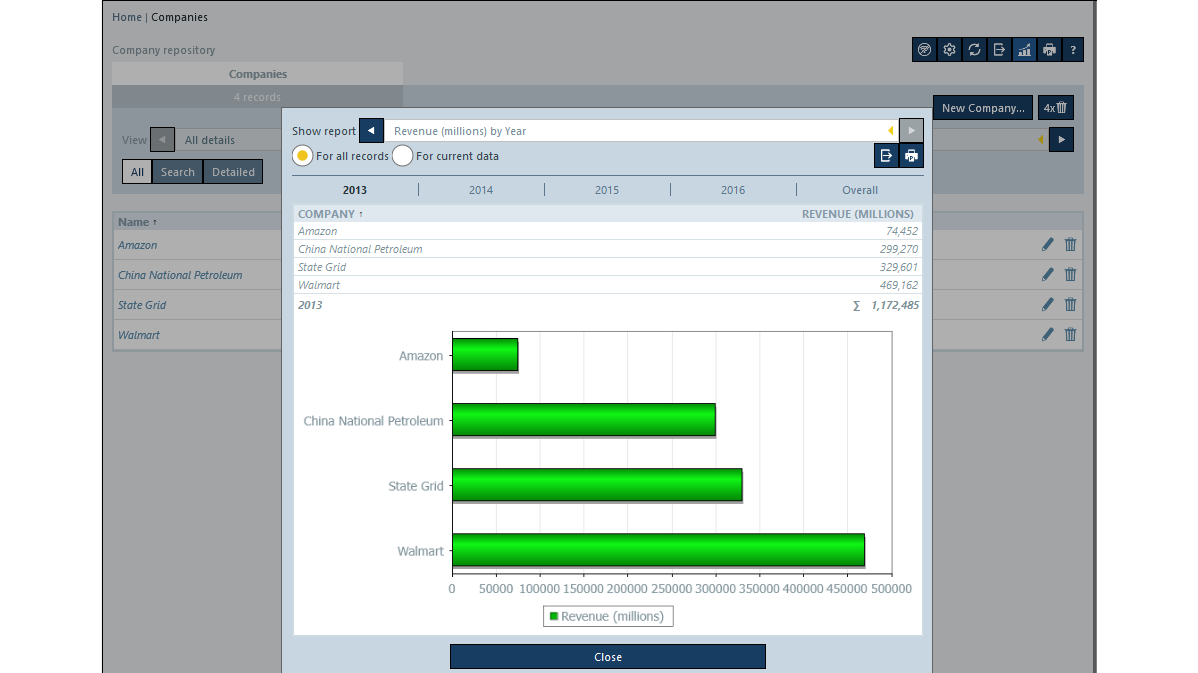Imagine expressing your database vision in a single sentence. Now, see it come to life with RecordsManager.
The AI Assistant in RecordsManager will generate a fully-featured database based on a single prompt. This not only saves an incredible amount of time and effort for app developers but also opens up the world of database creation to anyone, even if they have no background in database design. You simply tell the AI Assistant what type of information your app needs to store, and RecordsManager creates the database in seconds.
AI integration in RecordsManager empowers you to:
RecordsManager includes several sample prompts to use as inspiration to see how the functionality works and help you formulate a request.
Once your AI request is processed, the database you described is created in RecordsManager. Based on the prompt above, a database has been created with tables and sample records for Members and Yachts. When we explore the tables, we see AI has also specified relevant fields for the database tables.
After the first prompt, you can continue to use the AI Assistant to modify the database structure of your app:
You can review the changes returned by IA before RecordsManager modifies the database structure.
In addition to creating the database structure based on your prompts, RecordsManager has generated forms, filters, and reports for your database solution. Below is a data entry form auto-created for adding new member records with their yacht info to the database app.
When your database includes numerical data, RecordsManager even autogenerates reports for display and analysis.
Of course it's easy to modify or add to these database elements using the visual, no code tools in RecordsManager. For instance, you can modify the layout of forms, design a start page for your app, add data entry hints, reminders, change tracking, and much more.
Get started with RecordsManager right away for free. The Altova Cloud gives you immediate access without needing to download software or create an account. If you wish to save your work and preserve your data after trying the solution, simply create a free evaluation account.




